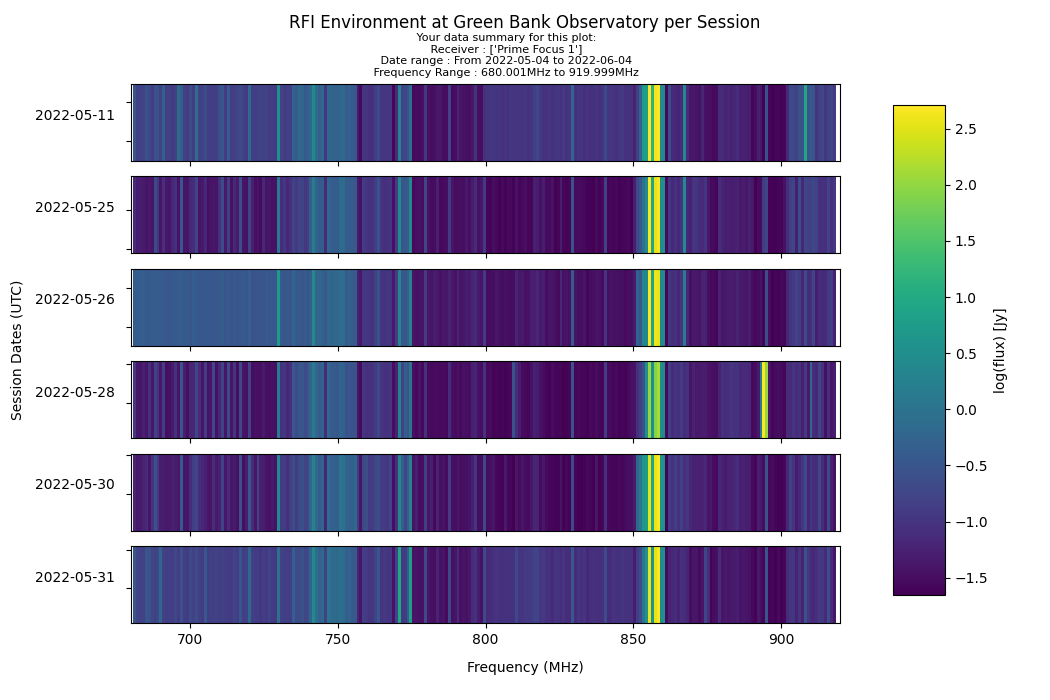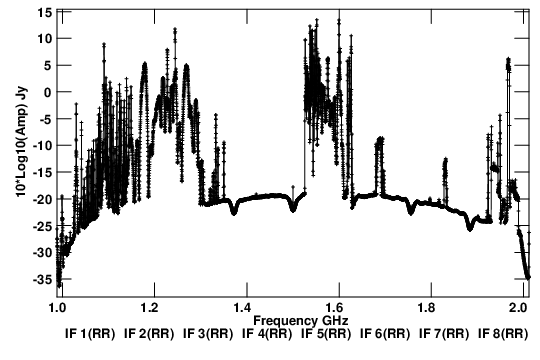RFI Monitoring & Mitigation
All AUI radio astronomy sites (Green Bank Observatory, Jansky Very Large Array and ALMA) carry out some sort of regular RFI site monitoring, and careful RFI testing of devices to be deployed at any of the sites. The specifics of current RFI monitoring practices at each site are explained below. Historical and current reports on RFI can be found in the NRAO RFI Memo Series. NRAO also holds a monthly RFI Journal club for scientists, engineers, and analysts.
Green Bank Observatory:
Green Bank Observatory (GBO) is located in the National Radio Quiet Zone (NRQZ) and West Virginia Radio Astronomy Zone (WVRAZ) which affords it significant protections from local fixed wireless transmissions. RFI monitoring activities at the GBO are described in detail here. The Interference Protection Group (IPG) meets bi-weekly to discuss RFI issues at the Observatory and in the NRQZ. Green Bank Observatory has developed an RFI GUI that allows users to interactively search archive RFI and is actively developing a web-based version of the same GUI. NRAO is currently working to expand the RFI GUI capability to VLA RFI sweeps data taken monthly.

Sample of the RFI GUI from 2022 data in the 680-920 MHz range showing strong RFI between 800-900 MHz, some intermittent and some consistent. These sorts of detections can be used to track down onsite and offsite RFI sources.
Jansky Very Large Array:
While its remote location affords it some geographical protection from RFI sources, the Jansky Very Large Array is not located in a radio quiet zone, and is subject to more RFI than the telescopes at Green Bank Observatory. RFI Monitoring activities at the VLA are described in detail here.

The radio spectrum as sampled by the VLA in August 2022 in the D-configuration. Note the large amount of RFI present between 1-2 GHz, with the exception of several bands protected by international agreement (in particular, near the HI line at 1420 MHz).
Very Long Baseline Array:
Radio Frequency Interference (RFI), both internally and externally generated, is an increasingly significant problem at VLBA sites, particularly at wavelengths of 18cm and longer. Current VLBA RFI Monitoring information can be found here.
Atacama Large Millimeter Array (ALMA):
ALMA mostly operates at higher frequencies than the telescopes located at the GBO and in New Mexico. However, as commercial/active users push to higher frequencies, external RFI at ALMA is likely to become more of an issue.

